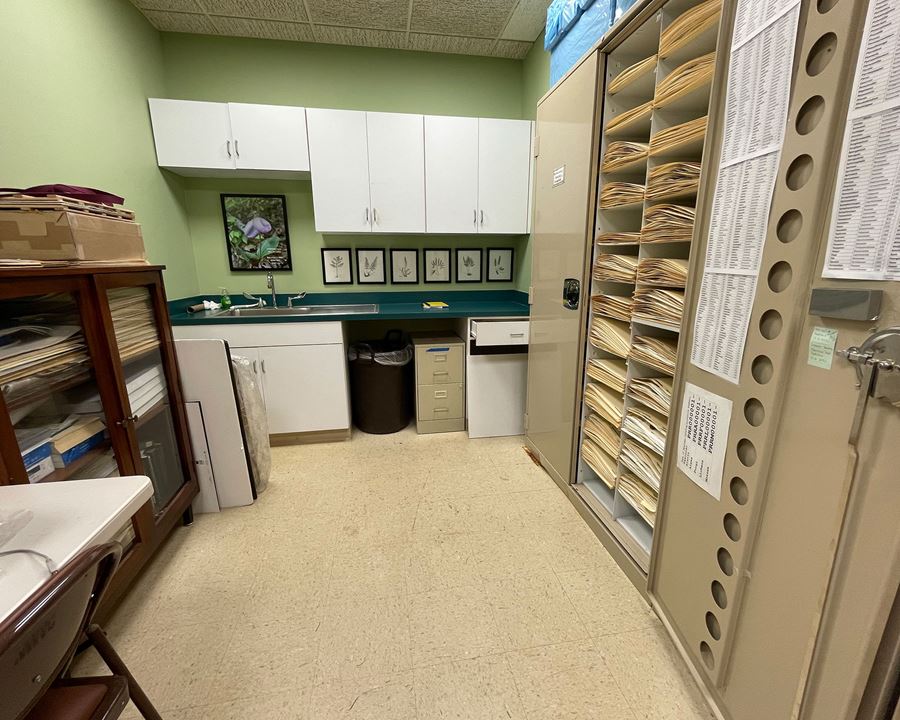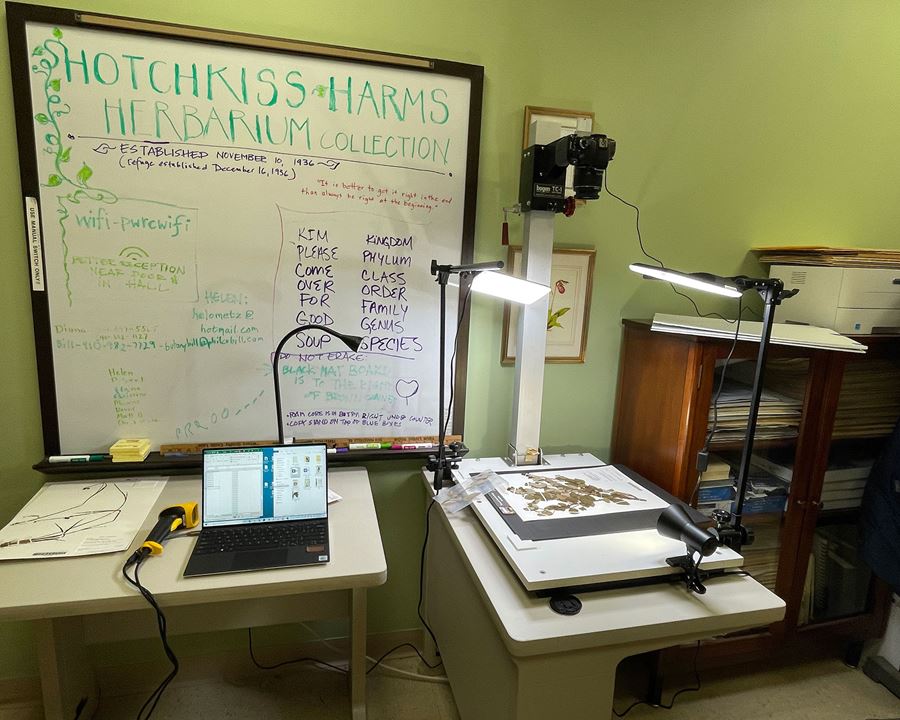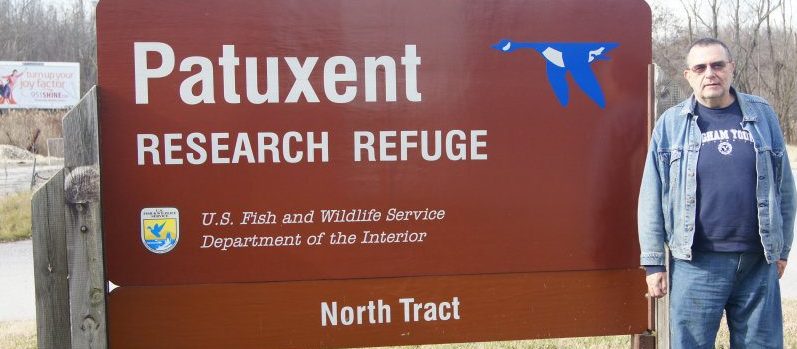Welcome to the Patuxent Research Refuge Plant Inventory Project


The history of plant collection at the Patuxent Research Refuge dates back to November 10, 1936, when Neil Hotchkiss gathered the very first specimen, predating the official establishment of the Refuge on December 16 of that year. Robert Stewart joined Hotchkiss, and from 1936 to 1946, they conducted a preliminary survey. Hotchkiss published the “Flora of the Patuxent Research Refuge, Maryland” in 1940.

In July 1947, Hotchkiss and Stewart published their survey results in “The American Midland Naturalist” in an article titled “Vegetation of the Patuxent Refuge, Maryland.” This was during a time when the refuge spanned some 4,000 acres, now known as the “Central and the South Tracts.”

Plants were collected and added to the refuge’s herbarium, with notable contributions from Neil Hotchkiss and Fran Uhler.

In 1979, William Stickel expanded upon the 1947 list with an addendum in the booklet “Vegetation and Vertebrates of the Patuxent Wildlife Research Center: Outline of Ecology and Annotated Lists,” introducing several new plant species to the refuge. The herbarium was then maintained by Matt Perry of the USGS until around 2010.

In the summer of 2010, the project took a more personal turn as I began photographing plants on the North Tract for enjoyment. By fall, after becoming acquainted with the North Tract staff, I learned about an old herbarium cabinet on the Central Tract. This discovery, along with discussions with Matt Perry and others, sparked the idea of systematically cataloging the plants on the North Tract.
After obtaining a Special Use Permit (SUP) on November 1, 2010, I began actively collecting and photographing the plants on the North Tract. Identifying nomenclature issues in the original Patuxent lists inspired the creation of a master list for the entire refuge.
 As of May 2022, the herbarium holds over 5,400 specimens, with more than 3,300 collected since 2010. We’ve identified over 1,000 species, including 200 new records for the refuge and five species previously unknown in Maryland. Combining this with the original Patuxent list brings the total vascular plant species (Tracheophyta) count across the refuge to approximately 1,300. The comparison of plants collected on the North Tract with historical specimens, including those gathered by Neil Hotchkiss and others, is an ongoing endeavor. Additional herbarium cabinets were added in 2015 and 2020 to accommodate the growing collection.
As of May 2022, the herbarium holds over 5,400 specimens, with more than 3,300 collected since 2010. We’ve identified over 1,000 species, including 200 new records for the refuge and five species previously unknown in Maryland. Combining this with the original Patuxent list brings the total vascular plant species (Tracheophyta) count across the refuge to approximately 1,300. The comparison of plants collected on the North Tract with historical specimens, including those gathered by Neil Hotchkiss and others, is an ongoing endeavor. Additional herbarium cabinets were added in 2015 and 2020 to accommodate the growing collection.
 In 2019, a partnership with the Mid-Atlantic Herbarium Consortium and the Norton-Brown Herbarium at the University of Maryland led to the digitization of voucher specimens. About 4,500 specimens have been imaged as of May 2022, with a custom photographic stand built at the herbarium for this purpose.
In 2019, a partnership with the Mid-Atlantic Herbarium Consortium and the Norton-Brown Herbarium at the University of Maryland led to the digitization of voucher specimens. About 4,500 specimens have been imaged as of May 2022, with a custom photographic stand built at the herbarium for this purpose.
The herbarium’s participation in the North American Network of Small Herbaria (NANSH) allows its data and specimen images to contribute to a national database. This network facilitates access to the herbarium’s resources for researchers and others while enhancing its standing in the research community.
Creating a final, comprehensive list of all refuge plants is an ongoing effort due to the dynamic nature of plant populations. Interested individuals can find the current plant species list on the Herbarium’s NANSH Web Page, providing valuable information for researchers, conservationists, and the public.
Collaborations with institutions like the National Herbarium at the Smithsonian Institution, the Norton-Brown Herbarium at the University of Maryland, the Steere Herbarium at the New York Botanical Gardens, the University of North Carolina at Chapel Hill, and the Maryland Natural Heritage Program have enriched the herbarium’s collection and contributed to a deeper understanding of regional plant biodiversity.
 The Friends of Patuxent has played a crucial role in supporting the herbarium project, recently assisting in purchasing the third herbarium cabinet. They have also allocated part of their budget to continue supporting the herbarium’s work. A detailed write-up about the herbarium project can be found on the Friends’ webpage, demonstrating their commitment to preserving and promoting the study of plant life within the Patuxent Research Refuge.
The Friends of Patuxent has played a crucial role in supporting the herbarium project, recently assisting in purchasing the third herbarium cabinet. They have also allocated part of their budget to continue supporting the herbarium’s work. A detailed write-up about the herbarium project can be found on the Friends’ webpage, demonstrating their commitment to preserving and promoting the study of plant life within the Patuxent Research Refuge.

Throughout the years, many individuals have contributed to the project, resulting in the formation of two subteams: one focusing on the herbarium directly and the other on fieldwork. These teams, totaling about 10 volunteers, continue to drive the project forward.
While botany is not my primary vocation, I hold a BS degree in the field and have maintained an interest in it over the years. While I don’t consider myself an expert in the local flora just yet, I am actively learning. Interestingly, my familiarity lies more with the flora of my hometown, Spokane, Washington, from over 40 years ago. I appreciate the offers of assistance and support extended towards the project.
Bill Harms, 1 May 2022



[…] “Why the North Tract is so special,” so check that out. Bill is continuing the work of Neil Hotchkiss in identifying and cataloging some 1,000 species of the 1,200 – 1,300 species there in the […]